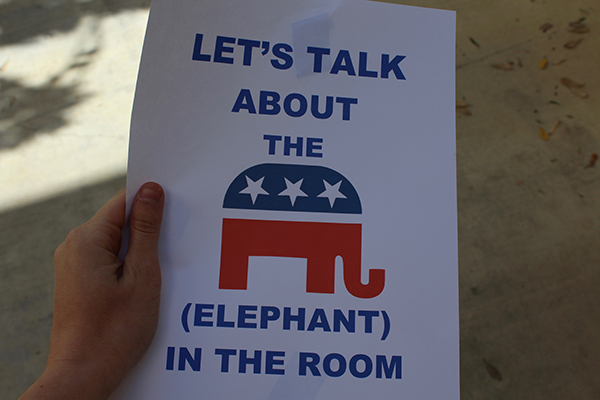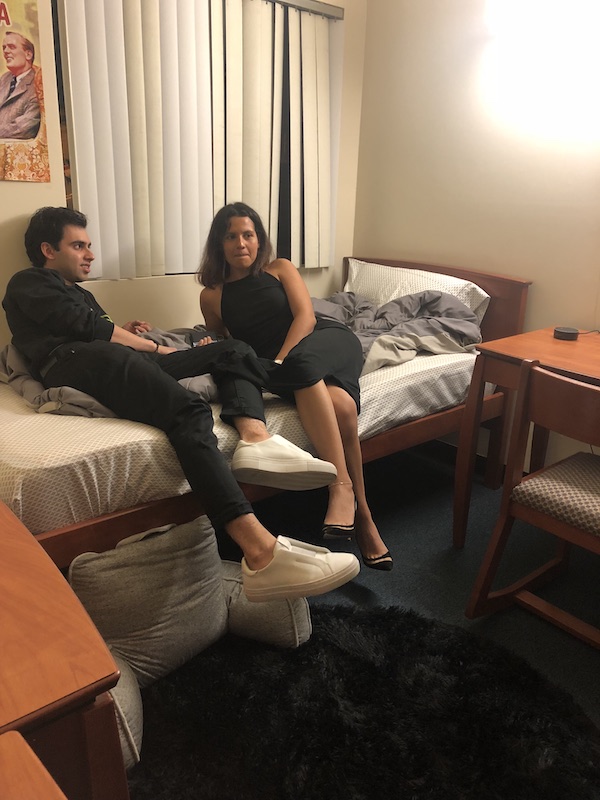
A morning fog settles onto a jagged coastline that stubbornly tries to embrace the ocean. As quickly as the fog creeps in, it diffuses as the sun rises. When the rest of the world is either scorched by the sun or frozen-over because of the absence of it, Malibu stays in the moderate 70s most of the year.
Except, of course, for the heat that greets Pepperdine University students at the start of fall semester, making every student groan about the lack of air conditioning in on-campus housing.
“I think that this needs to be something that is taken very seriously and it is not taken seriously as it needs to be. If it were than we would have had at least a temporary solution,” Pepperdine senior business major Aneil Patel said. “When it gets to be 85 degrees in an apartment, that is considered dangerous and it is considered a hazard and this is not acceptable to me.”
Despite the grumbling, students will never see a/c in the dorms due to the costs and the temperate climate of Malibu, administrators said.
“It does not seem like a very wise investment to spend upward of $20 million to air-condition residence halls which need air-conditioning for only about six weeks a year,” President Andrew K. Benton said in an email. “The cost-benefit analysis simply does not work; it never has.”
Benton said in the email that the school is trying to allocate student dollars wisely. Spending more money on electrical bills, maintenance and the installation of the infrastructure necessary for year-round air conditioning in the student housing will only add more pressure to tuition.
None of the student housing complexes have centralized air conditioning. Students are taunted with a heating system that has a cool setting on the thermostat.
“These thermostats say “cool” on them, which is different from the air conditioning function which say a/c on them,” said Luke Bost, associate director of Housing. “It works well for heating purposes but it will never really get cold.”
A spring 2014 survey of 50 students found that 96 percent of those surveyed wished there was air conditioning on campus. Housing now allows portable a/c systems but students shouldn’t hope for central air anytime soon, Bost said.
“It’s not a necessity to even survive because we are not even in the desert,” Bost said. “We always get cool coastal breezes even when it is warm.”
Malibu’s climate is hottest from August to early October and the Santa Ana winds keep the temperatures mild during the autumn and winter, Bost said. Malibu is not humid like it is in the Midwest and the East Coast.
Malibu has “June Gloom,” when the marine layer that keeps the temperature cool stays until around 1 or 2 p.m. and comes back to cool things down in the evening, Bost said.
The Santa Ana winds play a factor when it comes to the necessity of an-air conditioned room, said Ryan Kittell, a forecaster for the National Weather Service. These winds blow from the land to the sea September through November, eliminating the cool ocean breezes.
“Most of the time you only need a/c when the Santa Ana winds come,” Kittell said.
September and October are the hottest months in the area, according to the National Oceanic and Atmospheric Administration statistics derived from Santa Monica’s weather from 1998 to 2014. NOAA defines a hot day as greater than 85 degrees. In 2014, there were seven hot days in September and six hot days in October.
The small number of hot days is averaged out when monthly statistical readings are concerned, Kittell said. Therefore, it would be difficult to see if the weather has become drastically hotter over the last 30 years since the school built the first housing complex. The average temperature may have only increased by one degree.
“There is no significant difference in temperature from the 70s until now,” Kittell said. “Maybe the school was built during the summer when the temperature was cooler.”
Pepperdine’s Department of Design and Construction built the freshmen housing complexes from 1972-1974, Lovernich and George Page Phase I in 1982, Towers in 1983, Phase II of George Page in 1992 and Drescher in 2001, said Derek Sedam, office manager of Pepperdine’s Department of Design and Construction.
It would cost a lot of money and be difficult to retrofit those dormitories for air conditioning systems, Bost said. The University is considering air flow in a new housing complex to replace those on Greek Row, Bost said.
A few of the buildings in Drescher that use to be hotel rooms now serve as housing for students and have a/c.
“I look forward to coming back to my room,” said Philip Hong, a junior English education major, who lives in a former hotel room.
Hong’s roommate Phillip Lee, a junior accounting major, said it was convenient in the beginning of the year when it was “like 200 degrees outside.”
Some professors who live on-campus have air conditioning, but not all.
“I use the actual a/c part of the system in September or early October when it is really hot,” Communications Professor John Jones said. “We can exist without air conditioning.”
Housing and Residence Life added the ability to have portable air conditioning systems in dorms to the Student handbook about three years ago. The associate dean at the time wanted to give students an option, Bost said.
Residents are not allowed to install air conditioners or window coolers, but window fans and inside portable air conditioners are allowed as long as the window screen remains intact, and nothing can extend from the window or the building.
If any student chooses this option, they are to contact the HRL office for specific requirements, specifications and approval, Bost said. Portable units use a lot of electricity and must be plugged into a surge protector so that the “electrical breaker would not trip.”
Bost recommended a few fans and open windows instead.
“Pepperdine should buy the portable a/c units for us,” Patel said. “We shouldn’t need to check them out, they should have one in every apartment. I think that we as students pay enough for housing that the portable units should be inclusive in the price.”
Freshman Residential Adviser Ben Rodriguez said he receives complaints from the freshmen residents about the heat.
“Go to the Caf or the HAWC, or any place that has air conditioning on campus,” Rodriguez said he tells them.
Good airflow is harder in freshmen dorms where doors cannot be propped open due to alarms, Rodriguez said.
Students have complained about the heat on social media.
“President Benton, there has been heat exhaustion warnings all week,” Pepperdine student Niala Charles tweeted Sept. 16, 2014. “Living in a room that is more than 90 degrees is unsafe.”
Benton re-tweeted Charles later that day: “I get it. My office is 82 degrees right now and we should be selling snow cones.”
Patel said he wasn’t satisfied with the tweet.
“I would expect a person of his stature to come up with a better solution to a threatening problem,” Patel said.
Justin Cho, a junior business administration major, made his own air conditioning units to keep cool.
Cho filled Styrofoam coolers with ice, and then cut out two holes, one for a fan to go in and the other for a PVC pipe to blow out the cool air.
“The unit works to an extent,” Cho said. “So far it only stays cool in the front.”
Hansol Hwang completed this story in Dr. Christina Littlefield’s spring 2014 Jour 241 class.



